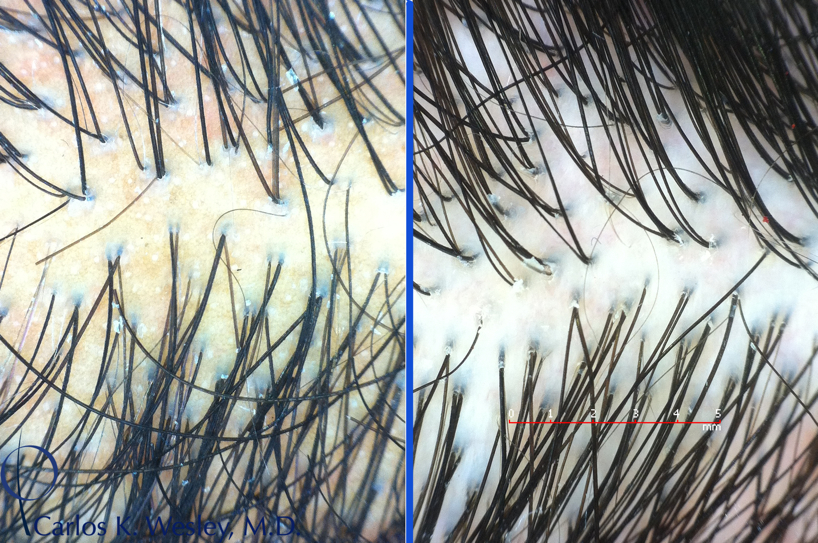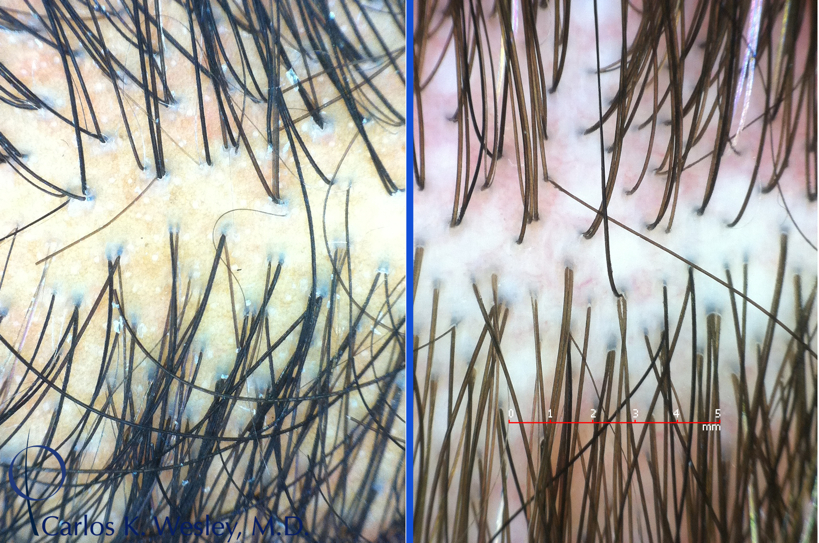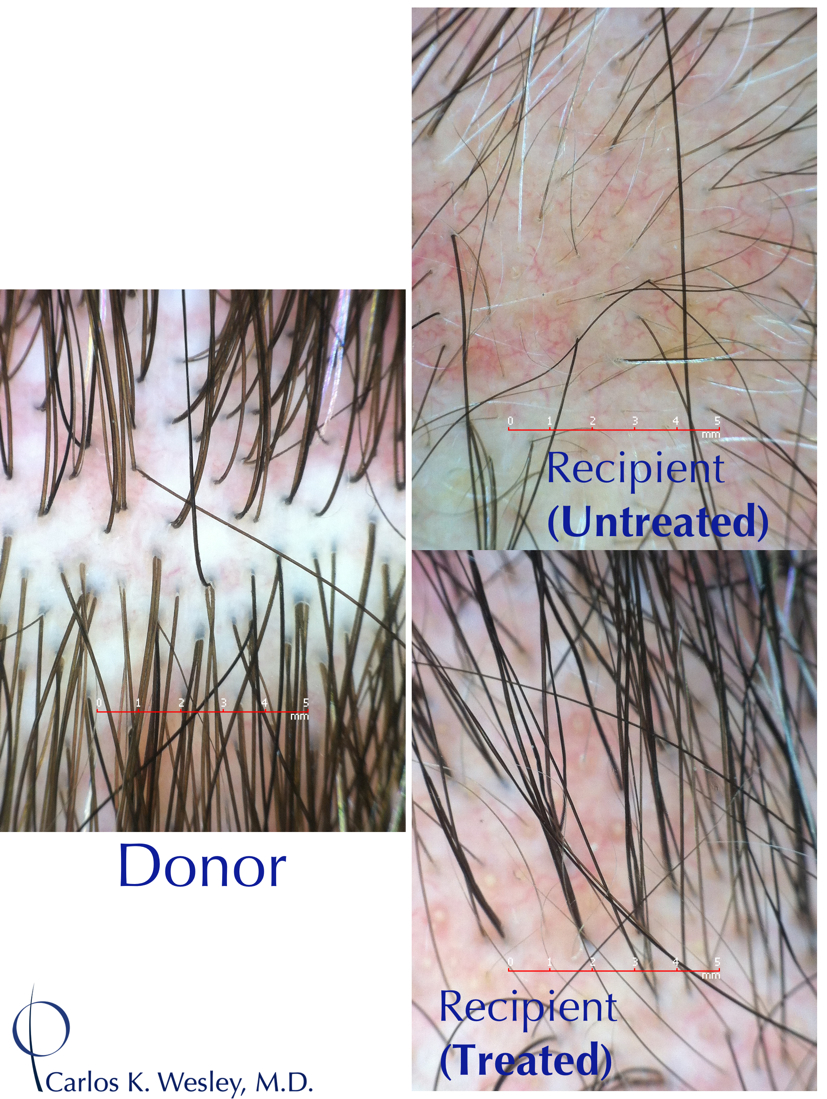Patients often come into an office wondering whether or not they are "good candidates" for surgical hair restoration. Even when told "yes" or "no" by the physician, a patient may want to better understand why they are or are not deemed a good candidate and where he or she may fit into the overall spectrum of candidacy.
While young patients can certainly refer to a helpful publication authored by our practice (view here) that helps provide a ballpark for the ultimate number of donor hairs one may anticipate over their lifetime, it is helpful to know about the "miniaturization" rule. Using magnified images of a patient's donor hair, a physician can determine the number of miniaturized hairs (those of the finest caliber compared to the regular caliber terminal hairs). As a general rule of thumb, young patients who possess 25% or more of their donor hair in miniaturized form are not great candidates for the surgical procedure. Not only will a large number of the transplanted hairs likely not be permanent hairs, but also the donor scarring (either FUT or FUE) will likely become exposed over time if the surrounding donor hair continues its anticipated course of MPB.
The following image depicts a relatively poor candidate for HRS on the left and a better candidate for HRS on the right. This is based on the relatively low number of miniaturized hairs present in the righthand patient's donor area. Both were of the same age.

This next image also compares a poor candidate (left) with a much better candidate for the procedure (right).

There are also a number of more subjective variables that help determine a patient's candidacy: the wave, curl, frizz, and color contrast between the hair and scalp. These can also influence the ultimate appearance of a patient after a full session.
To put it all together, here is an image of a good candidate's donor area, recipient area prior to treatment, and his recipient area after treatment as seen under a magnified lens. The same patient's transformation after a 2701-graft FUE session with me can be viewed in the accompanying video montage.

While young patients can certainly refer to a helpful publication authored by our practice (view here) that helps provide a ballpark for the ultimate number of donor hairs one may anticipate over their lifetime, it is helpful to know about the "miniaturization" rule. Using magnified images of a patient's donor hair, a physician can determine the number of miniaturized hairs (those of the finest caliber compared to the regular caliber terminal hairs). As a general rule of thumb, young patients who possess 25% or more of their donor hair in miniaturized form are not great candidates for the surgical procedure. Not only will a large number of the transplanted hairs likely not be permanent hairs, but also the donor scarring (either FUT or FUE) will likely become exposed over time if the surrounding donor hair continues its anticipated course of MPB.
The following image depicts a relatively poor candidate for HRS on the left and a better candidate for HRS on the right. This is based on the relatively low number of miniaturized hairs present in the righthand patient's donor area. Both were of the same age.

This next image also compares a poor candidate (left) with a much better candidate for the procedure (right).

There are also a number of more subjective variables that help determine a patient's candidacy: the wave, curl, frizz, and color contrast between the hair and scalp. These can also influence the ultimate appearance of a patient after a full session.
To put it all together, here is an image of a good candidate's donor area, recipient area prior to treatment, and his recipient area after treatment as seen under a magnified lens. The same patient's transformation after a 2701-graft FUE session with me can be viewed in the accompanying video montage.

.pdf)